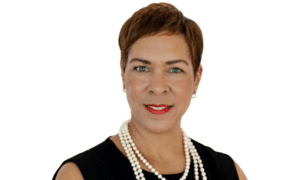Does claiming house insurance increase premium?
Does claiming house insurance increase premium?
Filing a claim increases your risk in the eyes of your insurance provider, and as your risk goes up, so do your premiums. You can expect to see a rate increase of 9% to 20% per claim, though this number varies by the type of claim and the number of claims you’ve filed previously.
How long does a house insurance claim take?
A home insurance claim can take between 48 hours to over a year to be settled, depending on a number of factors, such as the type of damage being claimed for and how many people are involved in the process.
What is the 80% rule in insurance?
The 80% rule means that an insurer will only fully cover the cost of damage to a house if the owner has purchased insurance coverage equal to at least 80% of the house’s total replacement value.
Is it hard to insure an old house?
Insuring older homes is much riskier for insurance companies. Older homes are more susceptible to damages like fires or roof problems. It might be more difficult for you to get a policy for an older home. If you are approved, you can expect to pay a higher premium than someone with a newer home.
Are older homes harder to insure?
In many areas, older homes are also more affordable. But older homes can be riskier to insure and more expensive to repair or rebuild. Depending on your home’s age and condition, you may need to buy special home insurance coverage for an older home or add certain insurance riders or endorsements to your policy. Sep 23, 2021
Why is home insurance so expensive?
In addition to industry-wide price increases, your home insurance quotes may also be high because of your credit, a home’s age and value, construction type, location, and exposure to catastrophes, among other factors. Dec 7, 2020
What’s the difference between home insurance and homeowners insurance?
While mortgage insurance protects the lender, homeowners insurance protects your home, the contents of your home and you as the homeowner. Once your mortgage is paid off, you have 100 percent equity in your home, so homeowners insurance may become even more crucial to your financial well-being.
Did homeowners insurance go up in 2022?
The average homeowners insurance cost in the United States in 2022 is $1,393 per year for a policy with $250,000 in dwelling coverage. This is a 6% increase from 2021’s average price of $1,312 per year. 4 days ago
What does 100 replacement cost mean for insurance?
Replacement Cost Coverage When you insure your home to 100% of its replacement cost value, some insurance companies will offer the benefit of extended replacement cost. This provision will pay beyond your policy limit should the amount at the time of loss not be adequate.
What is the difference between actual cash value and replacement cost?
Actual cash value coverage pays to repair or replace your home or property — minus depreciation, or wear and tear. Meanwhile, replacement cost coverage pays to repair or rebuild your property at today’s prices.
Is replacement cost the same as market value?
Replacement cost refers to the amount it would take to rebuild your home from the ground up, whereas market value is the amount that buyers are willing to pay for your house. Your home should be insured at its replacement cost. Jul 21, 2021
How do you determine the replacement cost of your home?
Home replacement cost is the total amount required to rebuild your home to its original standard. Your dwelling limit must be at least 80% of your home’s rebuild value to be fully covered. Home replacement cost can be calculated by multiplying your area’s average per-foot rebuilding cost by your home’s square footage. 3 days ago
What does full replacement mean?
Full Replacement Cost means the actual replacement cost from time to time of the improvement being insured, including the increased cost of a construction endorsement, less exclusions provided in the fire insurance policy.
How do you calculate dwelling coverage?
For a rough estimate of your dwelling coverage amount, you can simply multiply the square footage of the home by the local rebuild cost per square foot.
How much is homeowners insurance on a $300000 house?
The average home insurance rate is about $2,305 per year. … How much is homeowners insurance? Average rate Dwelling coverage Liability $1,806 $200,000 $100,000 $1,824 $200,000 $300,000 $2,285 $300,000 $100,000 $2,305 $300,000 $300,000 6 more rows
What are the six categories typically covered by homeowners insurance?
Generally, a homeowners insurance policy includes at least six different coverage parts. The names of the parts may vary by insurance company, but they typically are referred to as Dwelling, Other Structures, Personal Property, Loss of Use, Personal Liability and Medical Payments coverages.
Which home insurance company has the highest customer satisfaction?
Survey methodology Rank Company Average Customer Satisfaction Rating (out of 5) 1st USAA 4.6 2nd Erie 4.5 3rd American Family 4.4 4th GEICO 4.4 11 more rows • Jan 6, 2022
Which home insurance company has the lowest complaint index?
While Allstate has some of the cheapest home insurance rates, it underperforms in J.D. Power’s home insurance survey and has a higher Complaint Index than its competitors. …Company J.D. Power satisfaction rating* 2020 NAIC Complaint Index* Nationwide 812 0.53 State Farm 835 0.74 American Family 831 0.56 Chubb 801 0.31 6 more rows • Nov 2, 2021
What area is not protected by most homeowners insurance?
2. What’s NOT Covered On a Standard Homeowners Insurance … Earthquake and water damage. In most states, earthquakes, sinkholes, and other earth movements are not covered by your standard policy.
What are the 3 basic levels of coverage that exist for homeowners insurance?
Homeowners insurance policies generally cover destruction and damage to a residence’s interior and exterior, the loss or theft of possessions, and personal liability for harm to others. Three basic levels of coverage exist: actual cash value, replacement cost, and extended replacement cost/value.



